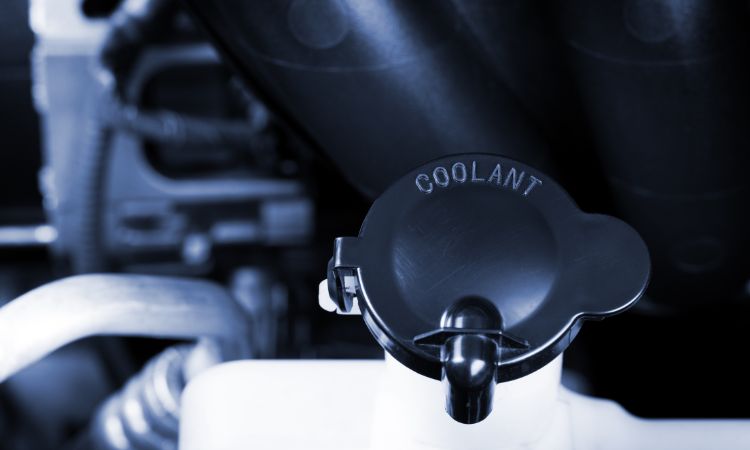How to Take Apart a Tire Pressure Gauge
To take apart a tire pressure gauge, first, locate the small screw on the back. Unscrew it using a small flathead screwdriver.
Then, carefully separate the two halves of the gauge to access the inner components. Maintaining proper tire pressure is essential for ensuring a safe and smooth driving experience. To accurately measure and monitor tire pressure, a tire pressure gauge is indispensable.
However, there may come a time when you need to disassemble the gauge for cleaning, repairs, or replacement of certain parts. Understanding how to take apart a tire pressure gauge can be useful in such instances. In this guide, we will provide you with simple steps to dismantle your tire pressure gauge effectively. By following these instructions, you can easily access the inner components and perform necessary maintenance tasks. So, let’s dive into the process of disassembling a tire pressure gauge.

Credit: www.youtube.com
Disassembling The Tire Pressure Gauge
Taking apart a tire pressure gauge may seem daunting at first, but with the right steps, it can be done efficiently. Disassembling the gauge allows you to inspect and clean its internal components thoroughly, ensuring accurate readings in the future.
Preparation
- Ensure the tire pressure gauge is not in use.
- Gather necessary tools like screwdrivers and pliers.
- Choose a well-lit and spacious work area.
Removing The Outer Casing
Begin by locating the screws that hold the outer casing together. Use a suitable screwdriver to carefully remove each screw.
Identifying Internal Components
Once the outer casing is removed, you’ll be able to see the internal components of the tire pressure gauge. Take note of each component and its placement for easy reassembly.

Credit: www.reddit.com
Cleaning And Inspection
To clean and inspect a tire pressure gauge, start by separating the parts carefully. Then, wipe each component thoroughly with a clean cloth. Once clean, inspect for any signs of wear or damage and ensure all parts are functioning properly before reassembling.
Cleaning The Components
To start the cleaning process, gather the necessary supplies: a soft cloth, mild soap, warm water, and a toothbrush or small brush. Follow these steps to clean the components of your tire pressure gauge:- Begin by removing the battery if your gauge is powered by one. This will prevent any accidental damage to the electronic components during the cleaning process.
- Using the soft cloth soaked in warm soapy water, gently wipe the exterior of the gauge. Ensure you remove any dirt, grime, or oil that may have accumulated on the surface.
- Next, focus on the nozzle or the part that attaches to the valve stem. Use the toothbrush or small brush to clean this area thoroughly, removing any dirt or debris that may be stuck.
- For the gauge face, dampen the soft cloth with warm soapy water and carefully wipe it clean. Be gentle to avoid scratching the surface.
- Once you have cleaned all the components, rinse them with clean water to remove any soap residue. Pat them dry with a clean towel before reassembling the gauge.
Inspecting For Damage
After cleaning the components, it is crucial to inspect the tire pressure gauge for any signs of damage. Follow these steps to ensure your gauge is in optimal condition:- Examine the nozzle carefully for any cracks, chips, or wear. If you notice any damage, it is important to replace the nozzle to maintain accurate readings.
- Check the gauge face for any scratches or signs of fading. A damaged face can affect the readability of the gauge and may require replacement.
- Inspect the rubber gasket or seal on the nozzle to ensure it is intact and free from any tears or deterioration. A damaged seal can cause air leakage, resulting in inaccurate pressure readings.
- Test the functionality of the gauge by pressing the nozzle against a hard surface and ensuring the needle moves smoothly. If you notice any sticking or inconsistency, it may indicate internal damage.
Replacing Worn Parts
If you come across any worn or damaged parts during the inspection, it is essential to replace them promptly. Here are a few key parts to consider replacing:| Part | Reason for Replacement |
|---|---|
| Nozzle | Cracks, chips, or wear can affect accuracy |
| Face | Scratches or fading obstruct visibility |
| Rubber gasket or seal | Tears or deterioration may cause air leakage |
| Internal components | Sticking or inconsistency can indicate damage |
Reassembling The Tire Pressure Gauge
Learn how to easily disassemble and reassemble a tire pressure gauge with these simple steps. By following the process, you can inspect and maintain the gauge for accurate tire pressure readings. This can help prolong the lifespan of your tires and ensure safe driving conditions.
Now that you have successfully taken apart your tire pressure gauge, it’s time to put all the components back together. Reassembling the gauge is relatively straightforward, but it’s important to follow the proper steps to ensure accurate readings and optimal functionality. Here’s a step-by-step guide on how to reassemble your tire pressure gauge:
Putting The Components Back Together
1. Start by gathering all the components you disassembled, including the gauge head, valve stem, spring, and O-ring.
2. Carefully inspect each component for any signs of damage or wear. Ensure that the O-ring is in good condition and free from cracks or breaks.
3. Begin by reattaching the valve stem to the gauge head, lining up the threads and tightening the connection. Make sure the valve stem is secure, but avoid overtightening, as this may strip the threads.
4. Once the valve stem is properly connected, place the O-ring over the shaft of the valve stem. Ensure that it sits snugly in the groove and provides a proper seal.
5. Next, insert the spring into the gauge head, positioned in the area where the valve stem is located. Make sure the spring is properly aligned and seated.
6. Gently screw the gauge head onto the valve stem, taking care not to cross-thread the connection. Rotate it clockwise until it is secured tightly in place.
Testing The Gauge
After reassembling your tire pressure gauge, it’s essential to verify its accuracy before using it. Follow these steps to perform a simple test:
- Ensure that the gauge is set to zero. Look for a small reset button or knob on the gauge head.
- Attach the gauge securely to a properly inflated tire valve. Press it firmly to create a tight seal.
- Observe the gauge reading and compare it to the tire’s actual pressure. If the gauge accurately displays the pressure, you can proceed to use it confidently.
- If there’s a significant variation between the gauge reading and the tire’s pressure, you may need to recalibrate the gauge.
Calibrating If Necessary
If you find that your tire pressure gauge is not providing accurate readings, it may require calibration. Here are the steps to follow:
- Consult the manufacturer’s instructions or documentation for specific calibration procedures for your model.
- Generally, calibration involves using an adjustable wrench or a screwdriver to adjust the spring tension or other calibration mechanisms within the gauge head.
- Make small adjustments at a time, testing the gauge after each adjustment to ensure accuracy.
- Continue adjusting and testing until the gauge consistently provides accurate readings.
Remember, regular calibration is important for maintaining the reliability of your tire pressure gauge. It ensures that you can trust the readings it provides, allowing you to maintain optimal tire pressure for better safety and performance.

Credit: forums.g503.com
Maintenance Tips
Proper maintenance of your tire pressure gauge is crucial for accurate readings and prolonged lifespan. Here are the Maintenance Tips to ensure your tire pressure gauge remains in top condition.
Regular Cleaning And Inspection
- Clean the gauge with a soft cloth and mild detergent regularly.
- Inspect the gauge for any visible damage or wear and tear.
- Check the calibration of the gauge periodically to ensure accuracy.
Proper Storage
- Store the gauge in a dry and cool place away from direct sunlight.
- Avoid storing the gauge in extreme temperatures or humid conditions.
- Keep the gauge in a protective case or pouch to prevent damage.
Avoiding Common Mistakes
- Avoid dropping the gauge or subjecting it to impact.
- Do not overinflate tires when using the gauge to prevent damage.
- Do not expose the gauge to chemicals or solvents that can degrade its components.
Frequently Asked Questions For How To Take Apart A Tire Pressure Gauge
How Do You Fix A Tire Gauge?
To fix a tire gauge, first unscrew the cap, check for debris, and clean with a soft cloth. Then, reassemble and test the gauge for accurate readings.
What Are The Parts Of A Tire Pressure Gauge?
A tire pressure gauge consists of three main parts: a metal or plastic body, a pressure measuring mechanism, and a display unit. The body houses the mechanism and has a nozzle for connecting to the tire valve. The pressure mechanism measures the air pressure, while the display unit shows the reading.
How Do You Release Air From A Pressure Gauge?
To release air from a pressure gauge, locate the air release button or valve on the gauge. Press or turn the button/valve counterclockwise to release the air slowly until the desired pressure is reached.
Why Is Tire Pressure Gauge Not Working?
A tire pressure gauge may not work due to low battery, damaged gauge, incorrect usage, or calibration issues.
Conclusion
Ensure safety, use caution, follow steps, reassemble correctly. Carefully rejoin pieces to functioning tire pressure gauge. Practice makes perfect. Regular maintenance extends lifespan. Remember these tips for successful disassembly and reassembly!




